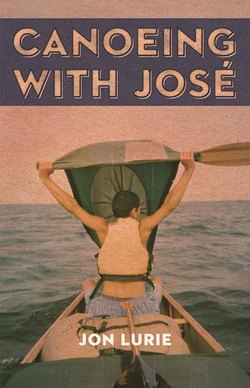Читать книгу Canoeing with Jose - Jon Lurie - Страница 9
На сайте Литреса книга снята с продажи.
ОглавлениеPROLOGUE
As a child I spent hours alone, roaming the woods near my home on the western edge of Minneapolis. I often dug my hands into the dank soil, praying to find an arrowhead, a piece of pottery, a handwritten note—some kind of clue that would help me understand who I was, where I was.
I had always been intrigued by the waterways around me, and by their names. But because my family was not of Minnesota, was not Dakota, no one ever told me that mni means “water.” Mni is embedded in the names of many places in Minnesota (Land of Smoky Waters): Minneapolis (City of Water), small towns like Minnewasta (Beautiful Waters) and Minneota (Abundant Waters), and giant lakes like Minnetonka (Great Waters). From the Minnesota River in the south to Big Stone Lake in the west, and from the Rainy River in the north to the St. Croix River in the east, water pulses through the arteries of the region I grew up in.
I remember one summer morning as an early crystallization of my lifelong love of the waterways of Minnesota. I was eight years old, just a few weeks from entering third grade. While playing at a park called Twin Lakes, I noticed a stand of golden cattails along the edge of a baseball diamond, waving at me like old friends across the manicured outfield. I wandered away from the teenager whom my mother had often charged with my care that summer. As I reached for a velveteen bloom atop a cattail’s spindly stock, I slipped into the marsh. Black mud and swamp water crept up to my knees, and then, clawing against slick banks, I quickly slid neck-deep into the muskeg. I turned toward the narrow band of open water that snaked through the cattails and swam, struggling through the rushes. Before long the sky opened and I emerged into a pond. I recognized it as the same pond where my little brother and I shoveled snow and played hockey in the winter. And with this recognition came a realization: Twin Lakes Park, which had always seemed so far away, was connected by water to this known place.
I blazed a trail through the pond’s copious green algae, swam around a buoy, and pulled myself up onto the grassy shore. After catching my breath, I wanted to know where the water flowed next. I noticed in one boggy corner a culvert, which ran beneath Cedarwood Road. I had seen this concrete tunnel many times from the road. I had even stood on it, skipping rocks. But until this afternoon, I had never wondered what it was for.
I walked along the shore to the culvert and observed the gurgling inflow. It occurred to me that this was the water’s next pathway, underground through this pipe. I followed it across a series of wooded backyards, tracking an old streambed to where the water surfaced again through the grated end of the concrete tube. The creek flowed lazily to the east and then entered another dark, whispering tunnel. From its entrance, I could see the windows of my bedroom.
My siblings and I had always referred to this patch of woods as the “creek.” We played there, built dams and rapids, swimming holes and forts. Deer occasionally happened through. This was one of the places where I dug in the earth, searching for clues.
I roamed the woods along the creek for weeks after this accidental adventure, but I was unable to locate the far end of that last dark tunnel. Finally, I inflated a small air mattress and floated into the tube. The water was shallow, and I pushed along the cold stone walls until I spilled into a wetland along France Avenue.
I quickly recognized this as the spot where my four older sisters and I flew kites in dry seasons. I could see the upper floors of the IDS Center, Minneapolis’s newest skyscraper, rising above the treetops and reflecting the aqua sky. I abandoned my raft and, following the trajectory of another culvert, walked over Basswood Road. I stood on the western shore of Cedar Lake and watched as water from the tube—water that had begun its journey at least three miles away, in Twin Lakes Park—flowed into the calm blue. I took in the open water, breathing deeply.
In subsequent expeditions that summer, I pedaled my Schwinn Stingray around Cedar Lake, eventually reaching the opposite shore, where I came upon a canal. I stood on a railroad bridge spanning the canal and looked down at the water. Had I continued to the next links in the Minneapolis Chain, I would have come first to Lake of the Isles, then to Lake Calhoun, and on to Lake Harriet. From there I would have found my way to Minnehaha Creek, and then on to the gateway to the world, the Mississippi River, which flows from Minnesota to the Gulf of Mexico.
I can still envision the sunlight filtering down through the towering red cedars and swaying willows that lined the canal. As a child observing this waterway for the first time, I ached to follow it. To be like the water, which always traveled but was never lost.
